Whether you are a carnivore or a vegetarian, mushrooms are an excellent option for planning your meals. Many types of mushrooms are meaty and can serve as replacements for burgers or even steaks, most notably, the portabello. But other types of mushrooms can also find a place at your table and make all of your dinner guests happy.

This particular vegetable has been popular since ancient times. Egyptian pharaohs once proclaimed them the food of Gods and prohibited commoners from eating them.
Grecians and Romans used them extensively in their recipes for both royals and commoners. However, the Romans utilized tasters to ensure the mushrooms were not poisonous before serving them to the masses.
Different Types of Mushrooms
Mushrooms come in many different varieties. They range from edible to deadly and somewhere between – inedible but unharmful. There are common and extremely rare varieties, and they can be inexpensive or highly costly.
You have options as close as your nearest grocery or big box store. Or, if you’re feeling adventurous, you could try foraging for one of several wild varieties. But you need to know a little about your options so you can choose the right ones for your tastes and purposes.
Types of Edible Mushrooms
Not all mushrooms are edible. Some are psychotropic, and some could sicken or kill you if you ingest them. Among the edible mushrooms, there are both common and uncommon varieties.
1. Morel Mushrooms

Morel mushrooms have a spongy honeycomb appearance. They aren’t the most attractive of mushrooms, but they are tasty. Also known as Morchella, these are expensive mushrooms that grow wild and have a woody flavor. They are best served sauteed in butter.
2. Portobello Mushrooms

Portobello mushrooms are a fantastic meat substitute. Their meaty texture leads to the caps of these giant mushrooms being used as a vegetarian burger of sorts.
The portobello is a white button mushroom that has fully matured. The cap grows outward from the stem at its center. They are popular in Italian cooking, and delicious when grilled.
Portobello mushrooms can be used as a bun for your sandwiches or a filling.
3. Crimini Mushrooms
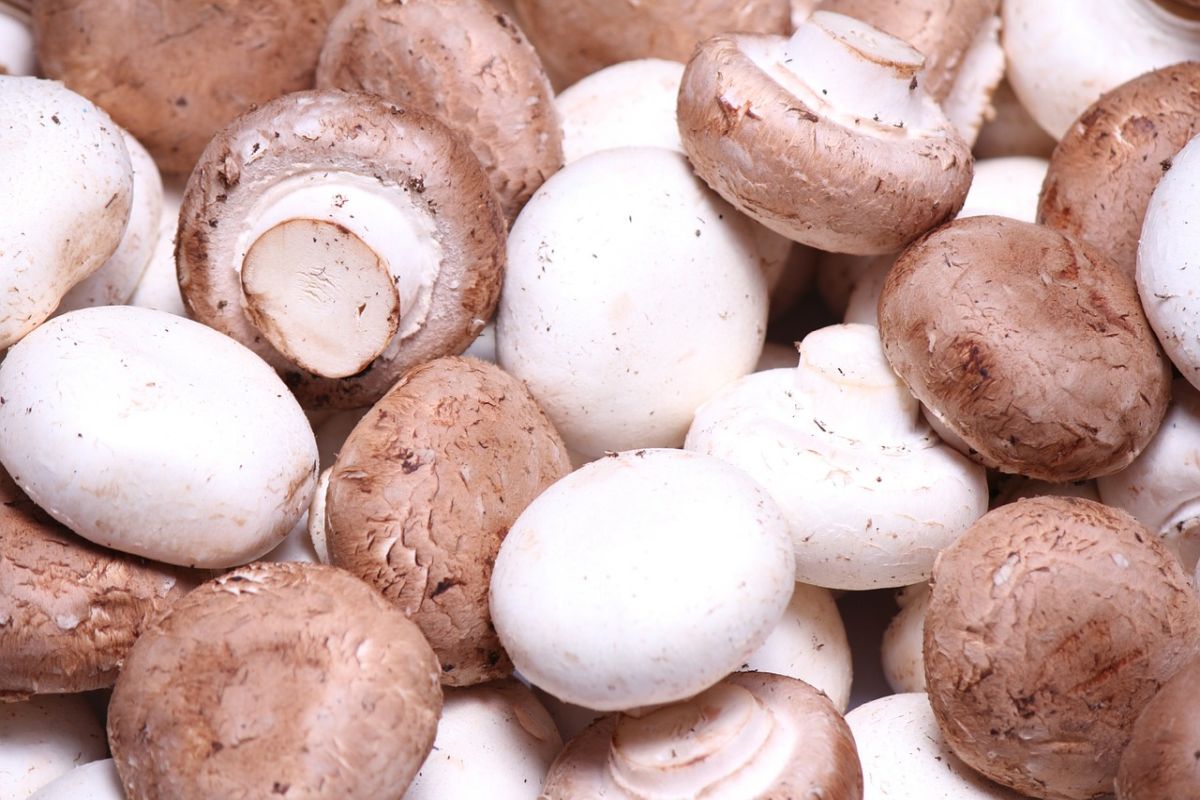
Crimini mushrooms are baby portobellos. They are slightly larger than button mushrooms and brown instead of white. They can be used interchangeably and are also known as cremini mushrooms. These edible mushrooms are a favorite in pasta dishes.
4. Enoki Mushrooms
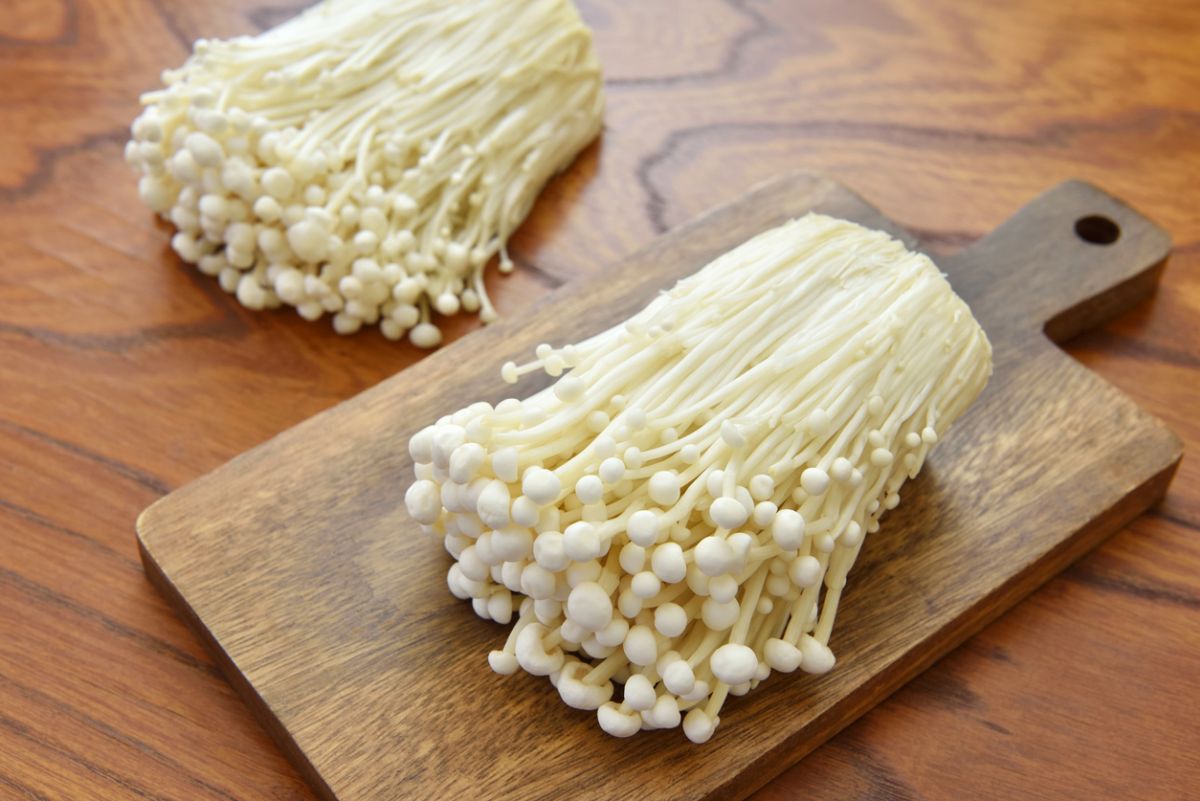
The Enoki mushroom, also known as an Enokitake mushroom, is native to Japan. They are best eaten raw and have a crunchy texture. These types of mushrooms work well in salads, soups, and stir fries. They can be purchased both raw and canned and are often featured in Asian cuisine.
5. Shiitake Mushrooms
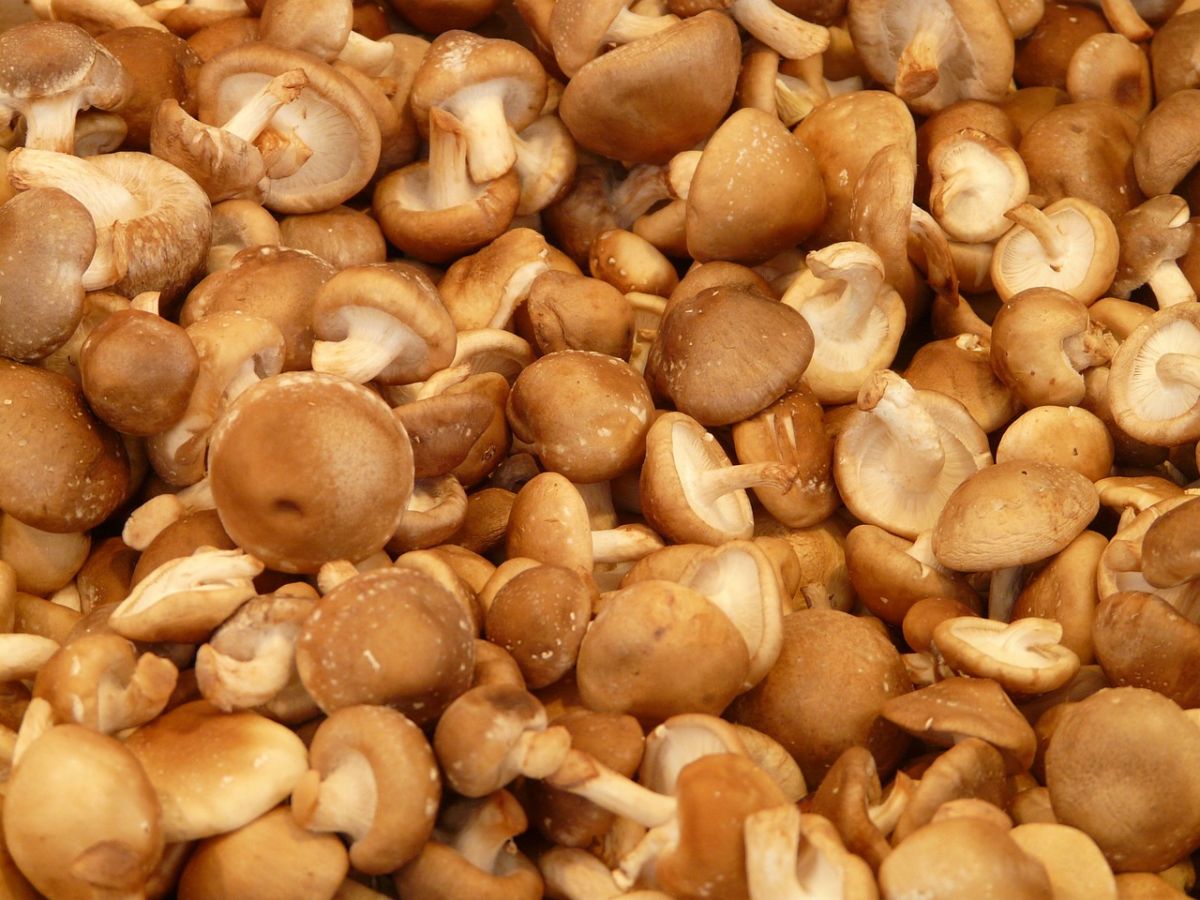
Shiitake mushrooms are another popular Asian variety of mushrooms. Like portobello mushrooms, the shiitake mushroom has a meaty texture and can be used as a substitute. Though initially grown in the wild, shiitakes are now mainly cultivated mushrooms and can also be purchased powdered.
Powdered shiitake mushrooms have a more intense flavor than the original vegetable.
6. Porcini Mushrooms

Porcini refers to the plural of these mushrooms popular in Italian dishes. They are reddish-brown in color and have a nutty flavor. You can find them canned, dried, or fresh.
If you choose the dried variety, you will need to soak them in hot water for at least 15 minutes before cooking with them. Like portobello mushrooms, porcini mushrooms are large and can get as big as 10 inches wide.
They are a member of the boletus edulis family, known for their nutty taste. They can be used in place of button mushrooms but really shine in dishes like risotto.
7. Oyster Mushrooms
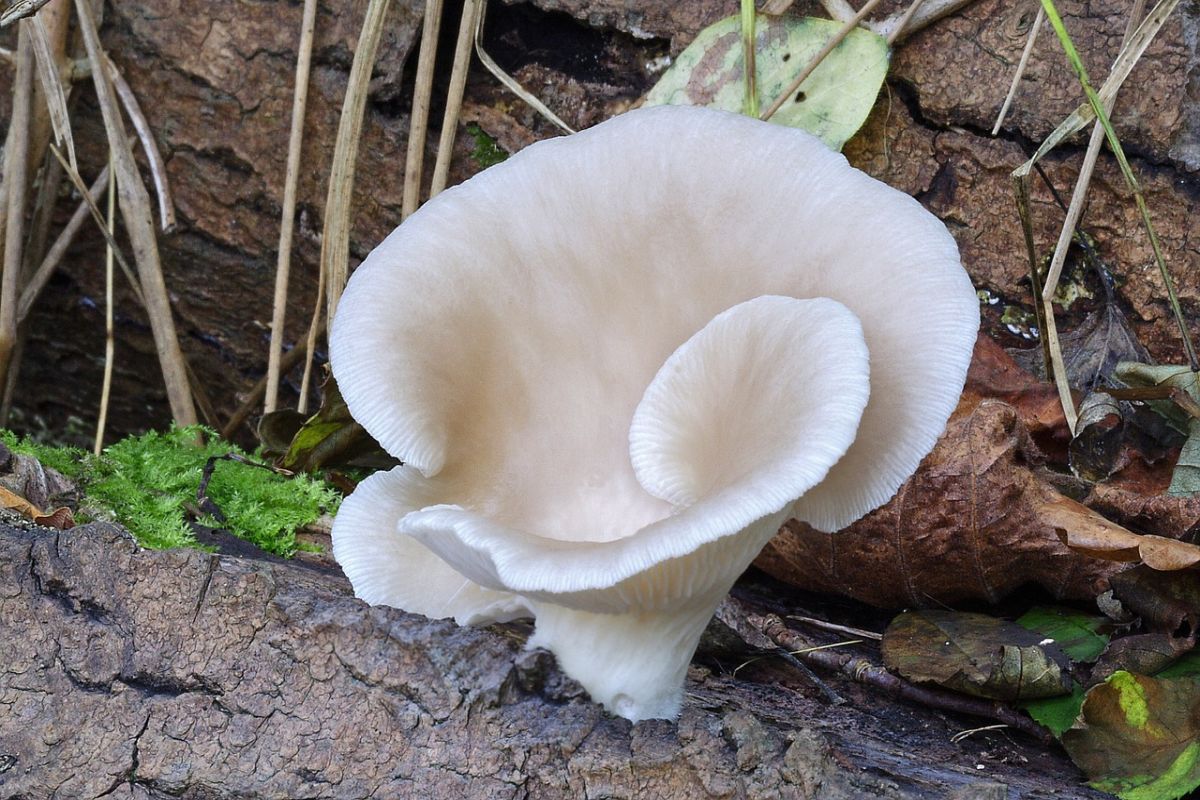
Oyster mushrooms are typically white and oblong, like the mollusk they are named after. They are also sometimes gray, brown, or red and are most flavorful when young. Though once found in the wild, these are now typically cultivated. They are sweet and delicate and often found in Asian cuisine and stir fries.
8. Black Truffle Mushrooms

The black truffle mushroom is one of the most prized wild mushrooms and one of the most expensive. They continue to grow wild, as they have for 250 million years. They are rare and often feature in dishes at high-end restaurants. This wild mushroom has never, and likely will never, be cultivated.
9. Chanterelle Mushrooms
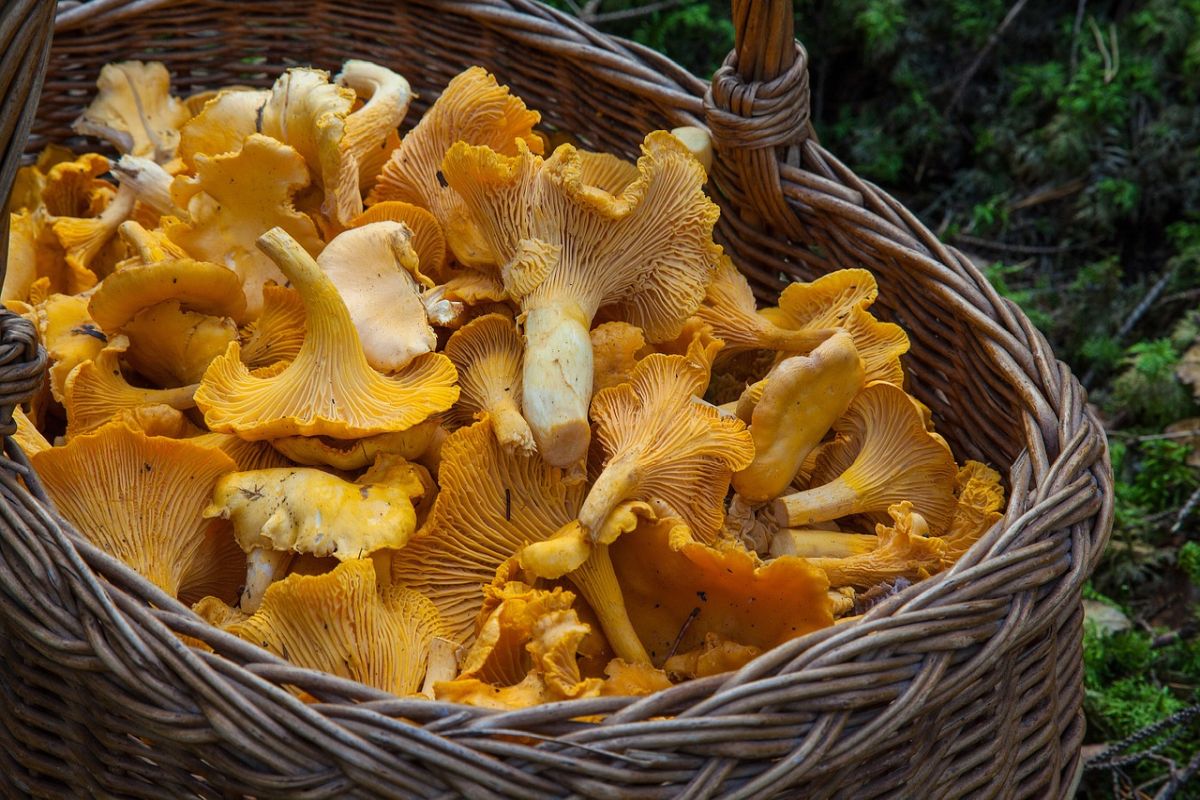
The chanterelle mushroom has a golden color and a fruity, peppery taste. The scent is sometimes compared to that of apricots. They’re native to the United States but widely feature in Austrian and French cuisine.
They have a trumpet-like shape and keep in the refrigerator for up to 10 days. Because of their high water content, they are best sauteed without oil, butter, or water.
10. Button Mushrooms

Button mushrooms or Agaricus bisporus are likely the most common mushroom out there. When people refer just to “mushrooms,” these are likely what they are thinking of. If you go to a grocery store and just pick up a package of mushrooms, the Agaricus bisporus is likely what you’re purchasing.
In recent years, white button mushrooms have been cultivated light brown. They are often marketed as a cremini mushrooms.
In fact, portobello mushrooms, cremini, and button mushrooms are all the same type of mushroom, the Agaricus bisporus. Button mushrooms are known for their mild flavor and broad appeal.
Types of Wild Mushrooms
Some wild mushrooms can be found in grocery and specialty stores. But many others have to be found in the wild. Several varieties are well known but incredibly difficult to find. They grow worldwide, but without the help of dogs, hogs, or a little luck, you might not find one of these gems.
11. Sparassis (Cauliflower Mushroom)
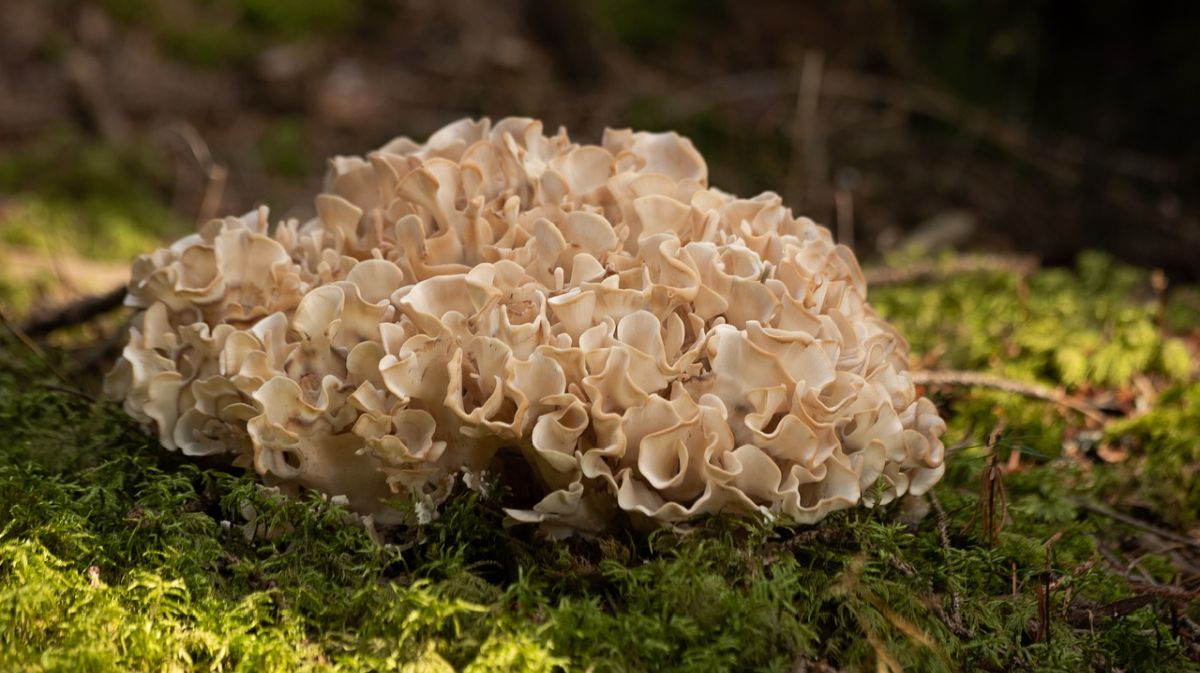
One particularly elusive wild mushroom is the Sparassis, also known as the cauliflower mushroom. These are difficult to find even for the most experienced of mushroom hunters.
They grow in the pacific northwest in North America, from December to early March in California, and one to two months earlier farther north. These giant mushrooms grow in the same spot each year, so if you’re lucky enough to find one, mark the site.
12. Beech Mushrooms
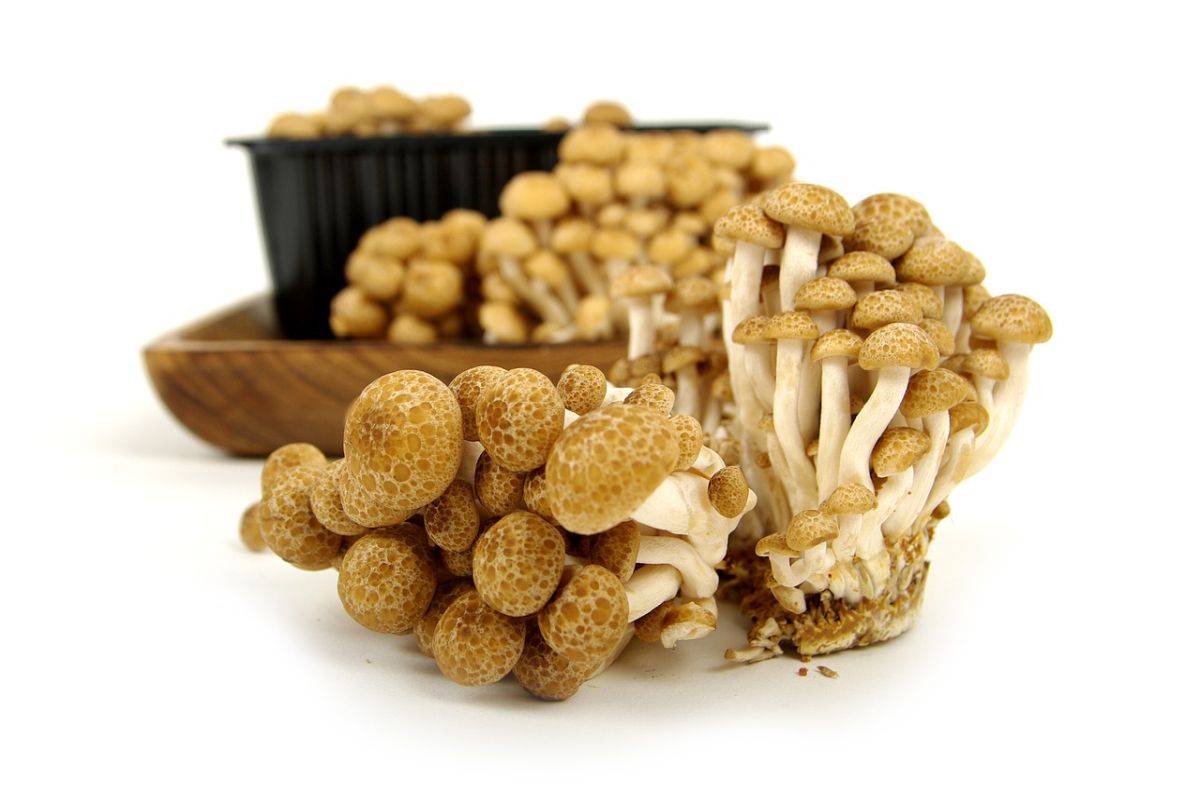
Not surprisingly, beech mushrooms grow on beech trees. They are also known as clamshell mushrooms and, when cooked, have a nutty flavor. White Beech mushrooms should be cooked before eating, as the raw version has a slightly bitter taste.
13. Hedgehog Mushrooms
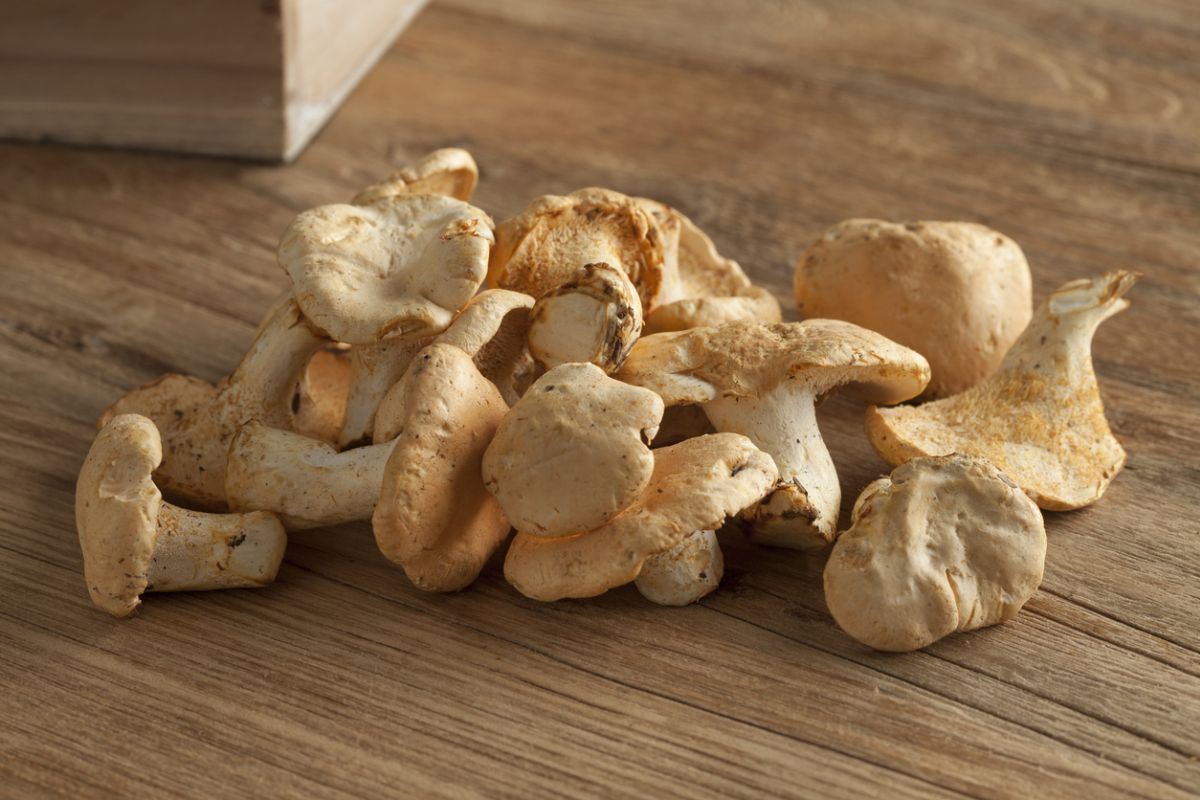
The hedgehog mushroom has a sweet flavor and scent when it’s young and is most appropriate for eating. They are similar to chanterelle mushrooms and grow wild throughout the West Coast of North America.
In addition to being sweet, it is known for having a meaty flavor and being crunchy and nutty. Hedgehog mushrooms are also known as the lion’s mane mushroom.
14. Trumpet Mushrooms
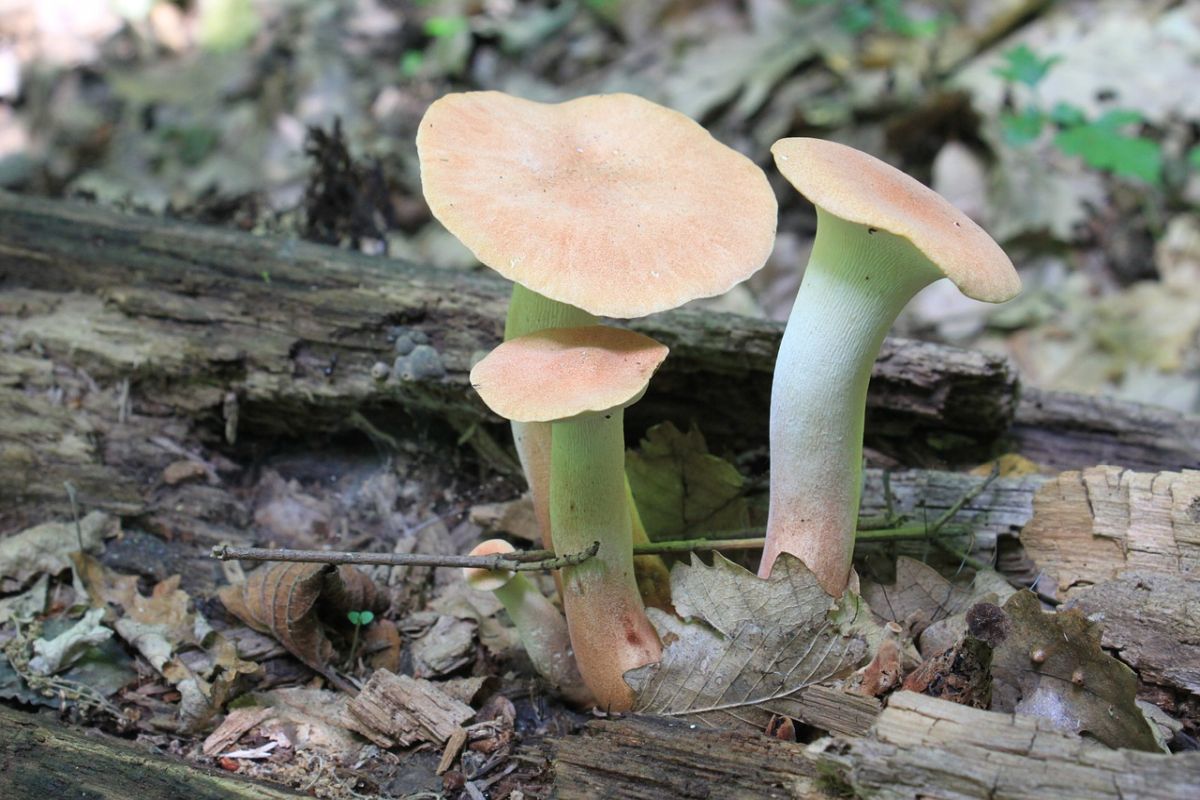
Trumpet mushrooms are members of the oyster mushroom genus and are known by a few different names. Besides the trumpet, they are known as a french horn mushroom and a king oyster mushroom.
When cooked, this meaty mushroom tastes like seafood. It is comparable to calamari or scallops and can easily be used as a meat substitute for your vegetarian dinner guests and friends.
King trumpet mushrooms are a larger variety of this type. Unlike porcini mushrooms and portobello mushrooms, it is the stem that is thick on King Trumpet mushrooms. But they also make an excellent meat replacement.
King Trumpet mushrooms grow in the Middle East, Europe, and North Africa and can now be found in most supermarkets. If your local one doesn’t carry them, check an Asian market if one is available locally.
15. Maitake Mushrooms

Maitake mushrooms are known in Japan as the “dancing mushroom” because legend has it that a group of Buddhist nuns and woodcutters met on a mountain trail, and when they found these delicious mushrooms growing on the forest floor, they danced in celebration.
In Italy, these mushrooms as known as “signorina” or the unmarried woman. They are also sometimes referred to as “hen of the woods” because they look like the feathers of a hen where they emerge from the elm and oak trees on which they grow.
They are common in Asian cooking, incredibly healthy, and have a rich flavor, similar to Umami.
16. Chicken of the Woods Mushrooms
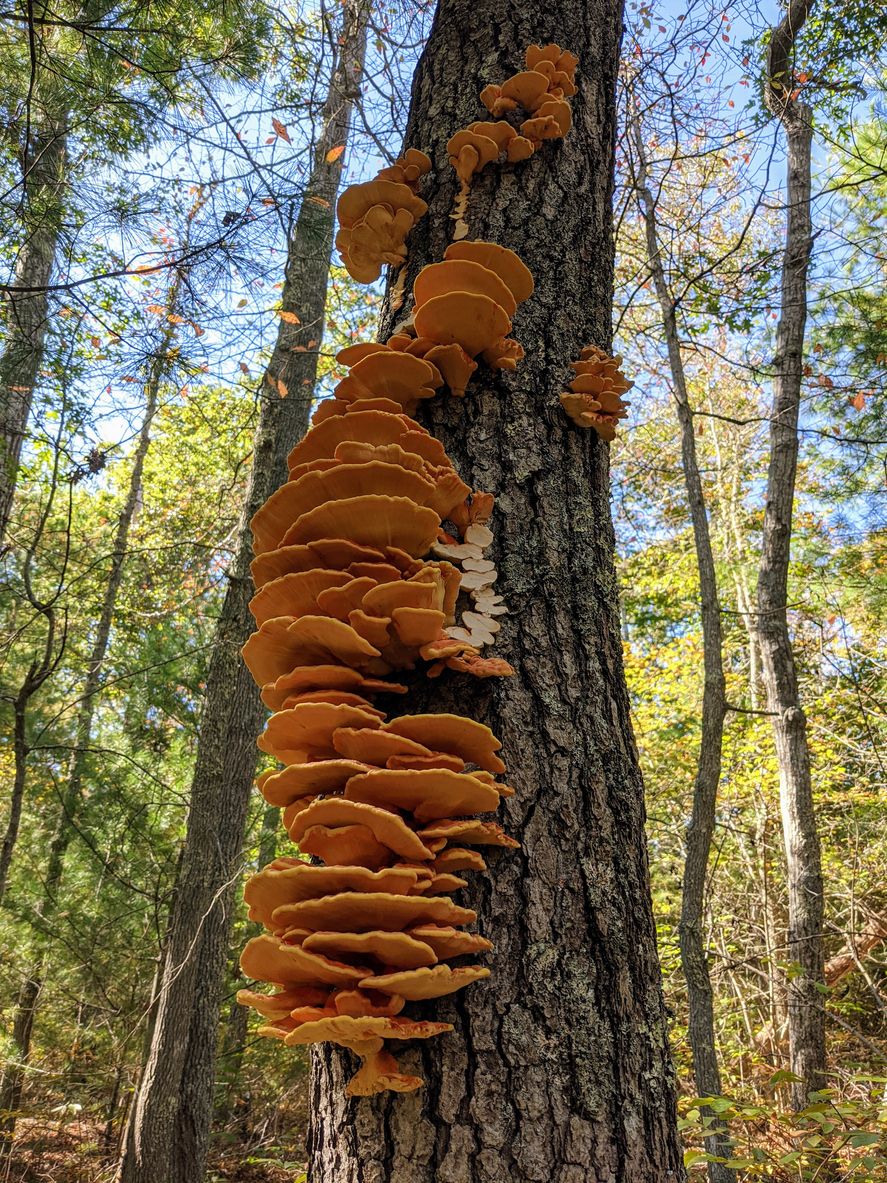
Chicken of the Woods Mushrooms, also known simply as a Chicken Mushroom, are another extra-large variety. They grow wild at the base of trees and are bright orange in the center.
This color gets lighter toward the edges. Underneath is bright yellow and covered in spores. The fresher these are, the brilliant. Over time, they become whiter and brittle.
These delicious mushrooms have a rich flavor often compared to chicken, crab, or lobster. It is also high in protein. It is similar to quinoa, at 14 grams of protein per 100 grams of mushroom, making it an excellent choice for those on a vegetarian or vegan diet.
17. Gypsy Mushrooms

The Gypsy Mushroom is buff-colored, and also has a mild flavor. It has a light brown cap and cream-colored flesh. The mushroom is common in parts of Europe and the Scottish highlands. It can also be found in North America, most commonly on the West Coast.
18. Magic Mushrooms

These popular wild mushrooms aren’t used for cooking, per se, but they are edible mushrooms. Known more commonly as “Shrooms,” they contain psilocybin or psilocin, a powerful hallucinogenic.
They can be consumed fresh or dried. The powdered form can be snorted or injected. Magic mushrooms can also be steeped into a tea, added to cooked foods, or, if powdered, added to fruit juice.
19. Field Mushrooms
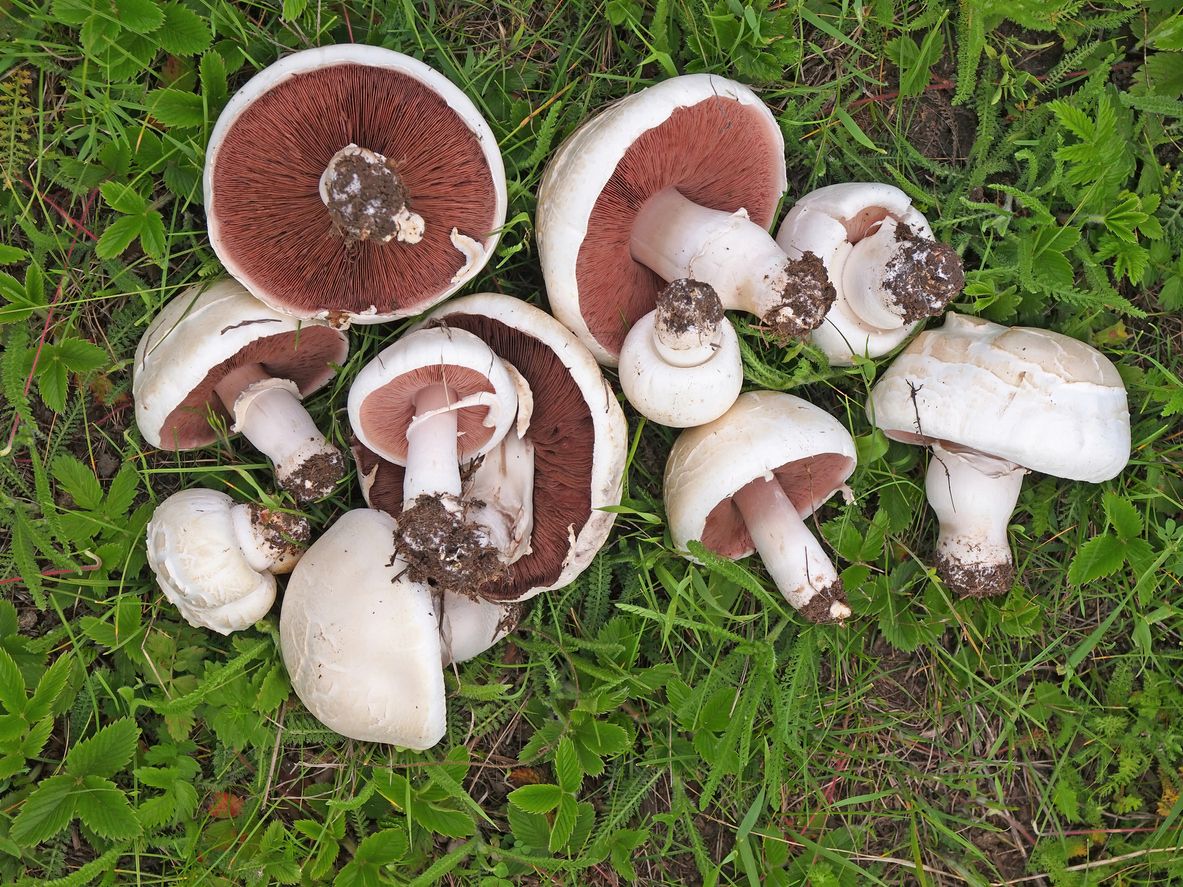
The field mushroom was once common but has become harder to find due to chemicals sprayed on the fields where they once grew wild. This edible mushroom has dark brown gills with a white cap and stem. It is better when cooked than eaten raw.
They are similar to button mushrooms but can be confused with the yellow stainer. Yellow stainer mushrooms are also wild mushrooms, but they are toxic.
20. Lion’s Mane Mushroom

Besides being delicious, the Lion’s Mane Mushroom is one of several medicinal mushrooms. It is known to help with cognition and brain function, not unlike Reishi mushrooms. It also aids in the production of nerve growth factors, and myelin, an insulation around nerve fibers.
Types of Poisonous Mushrooms
As lovely as mushrooms are and as many varieties as you can find, you need to be careful if you’re selecting wild varieties. While many mushrooms make delightful additions to your dinner routine, there are several that can kill you. These should be avoided at all costs.
And while poisonous mushrooms often have an acrimonious fragrance, several resemble edible varieties and should be considered carefully before consuming. Because mushroom hunting can be a dangerous sport, there are some things you can do to protect yourself when it comes to foraging for wild mushrooms.
Your best bet is to not eat any mushroom you cannot identify.
21. Death Cap Mushrooms
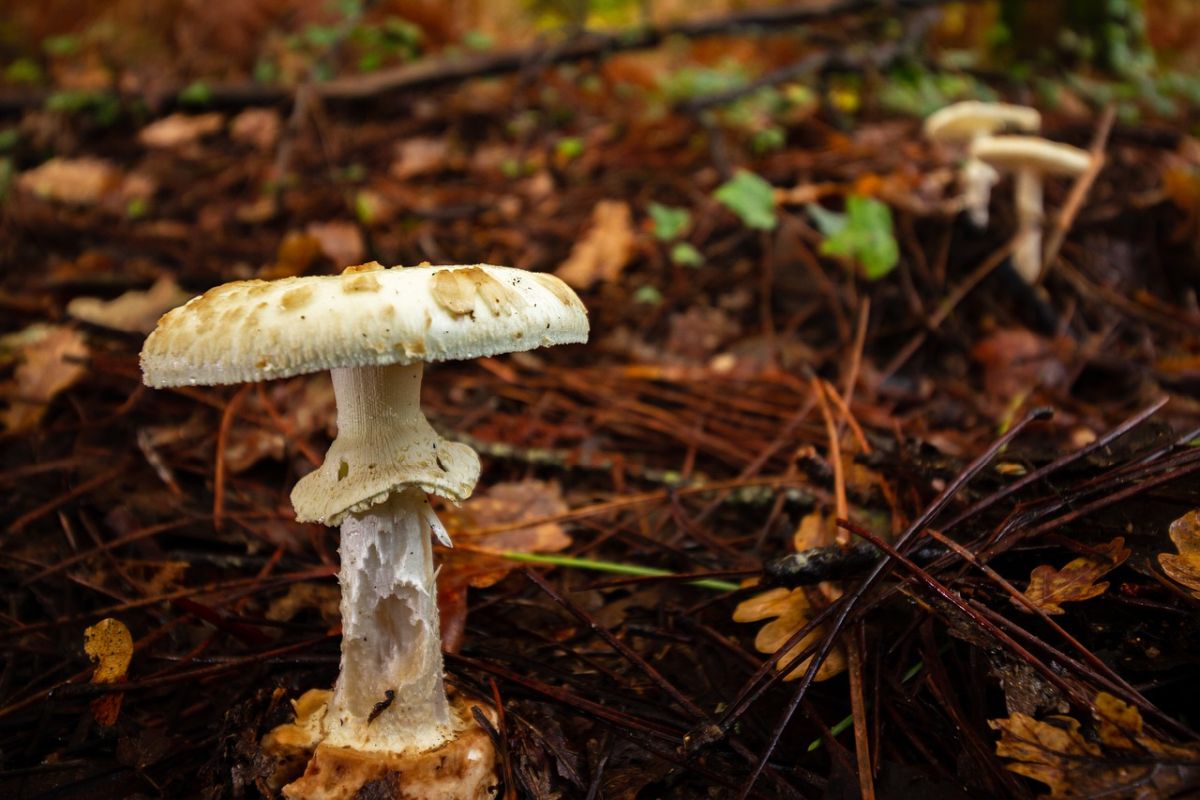
You would think the name of this varietal would be a giveaway. And it’s true, you won’t find these in your local supermarket. But if you’re in the wild and mushroom foraging, this one could throw you for a loop.
Death cap mushrooms resemble straw and caesar’s mushrooms, both edible. They withstand temperatures required for cooking but cause violent abdominal pain, vomiting, and bloody diarrhea when ingested. Coma and death result in 50 percent of cases.
22. Webcap Mushrooms
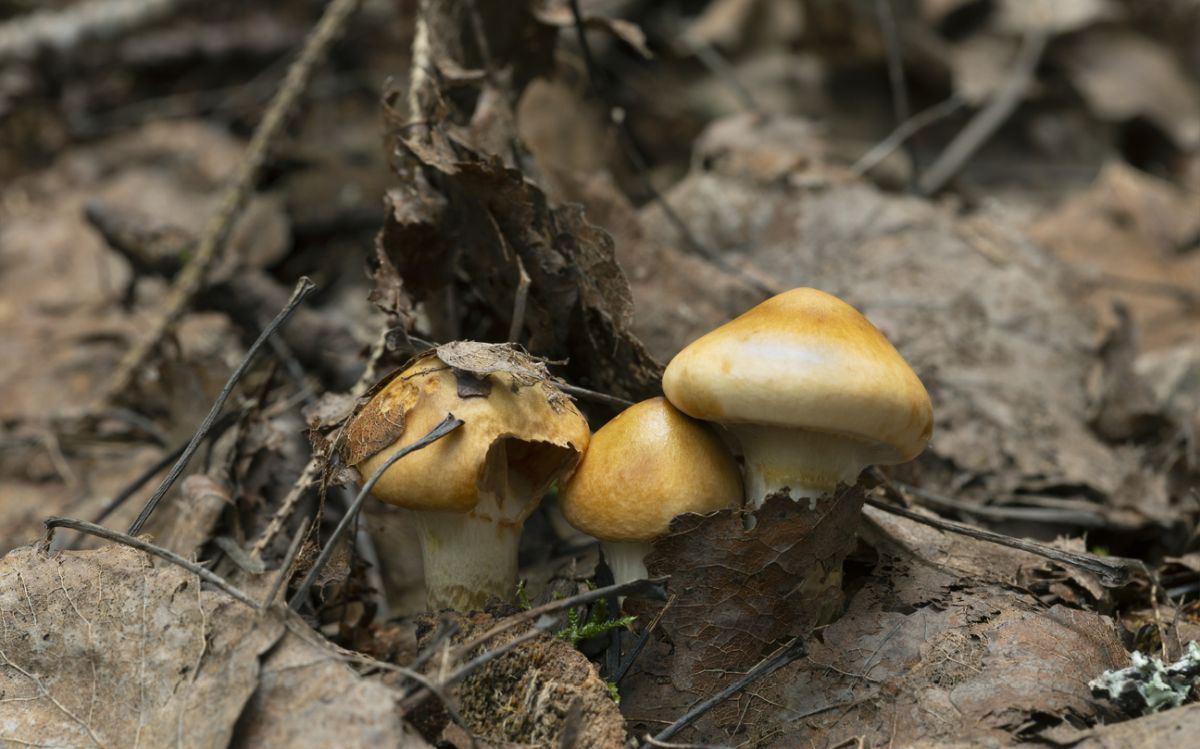
Webcaps are a particularly pernicious variety whose honeycomb appearance resembles Morel mushrooms. Symptoms may appear as early as 2 days or could take up to 3 weeks to manifest. Severe cases can lead to kidney failure and the need for a transplant.
23. Destroying Angel Mushrooms
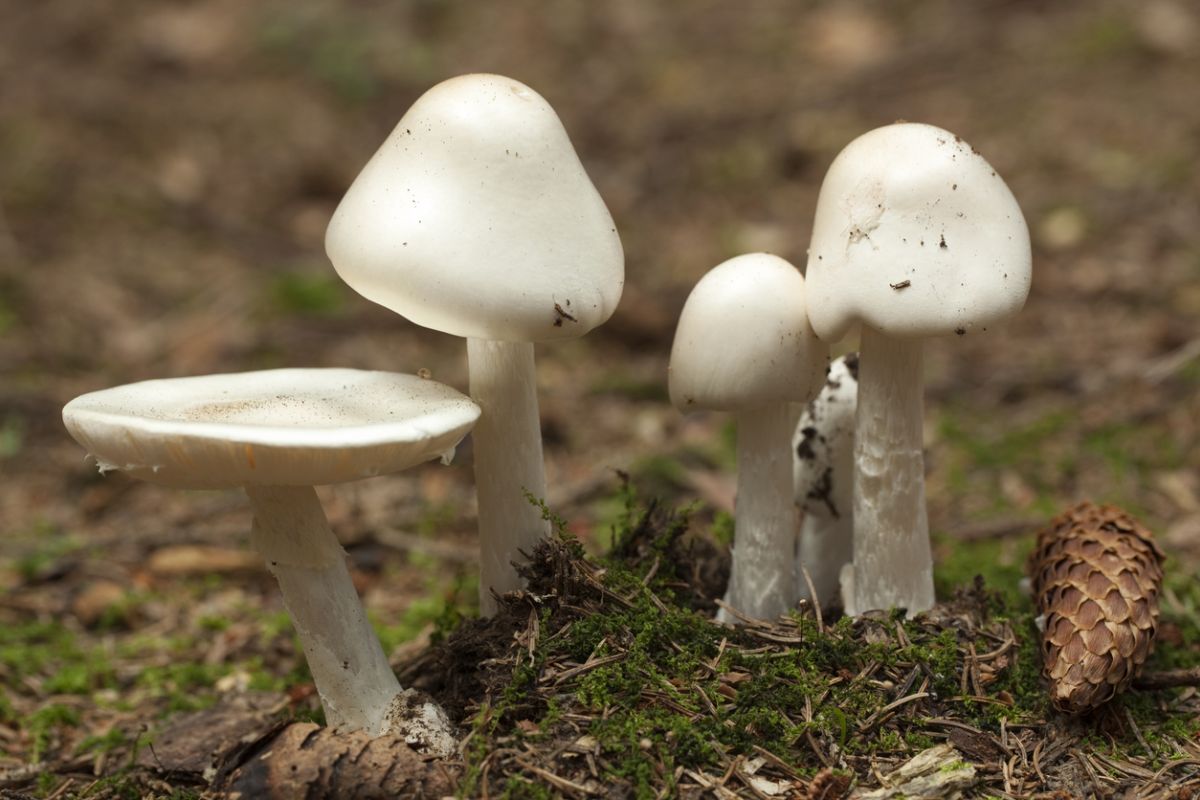
These toxic mushrooms resemble several varieties of white mushrooms. Most commonly mistaken for button mushrooms or meadow mushrooms, these little gems are considered the most toxic in North America.
Symptoms appear within 5-24 hours and include vomiting, delirium, convulsions, liver and kidney failure, and often, death.
24. False Parasol Mushrooms

False parasol mushrooms are the most commonly ingested poisonous mushrooms in North America. Fortunately, this variety, which sports umbrella-shaped brown caps, is not deadly. It causes vomiting and diarrhea and is often found in manicured lawns, mistakenly leading people to believe they are safe to consume.
25. Jack-o-Lantern Mushrooms
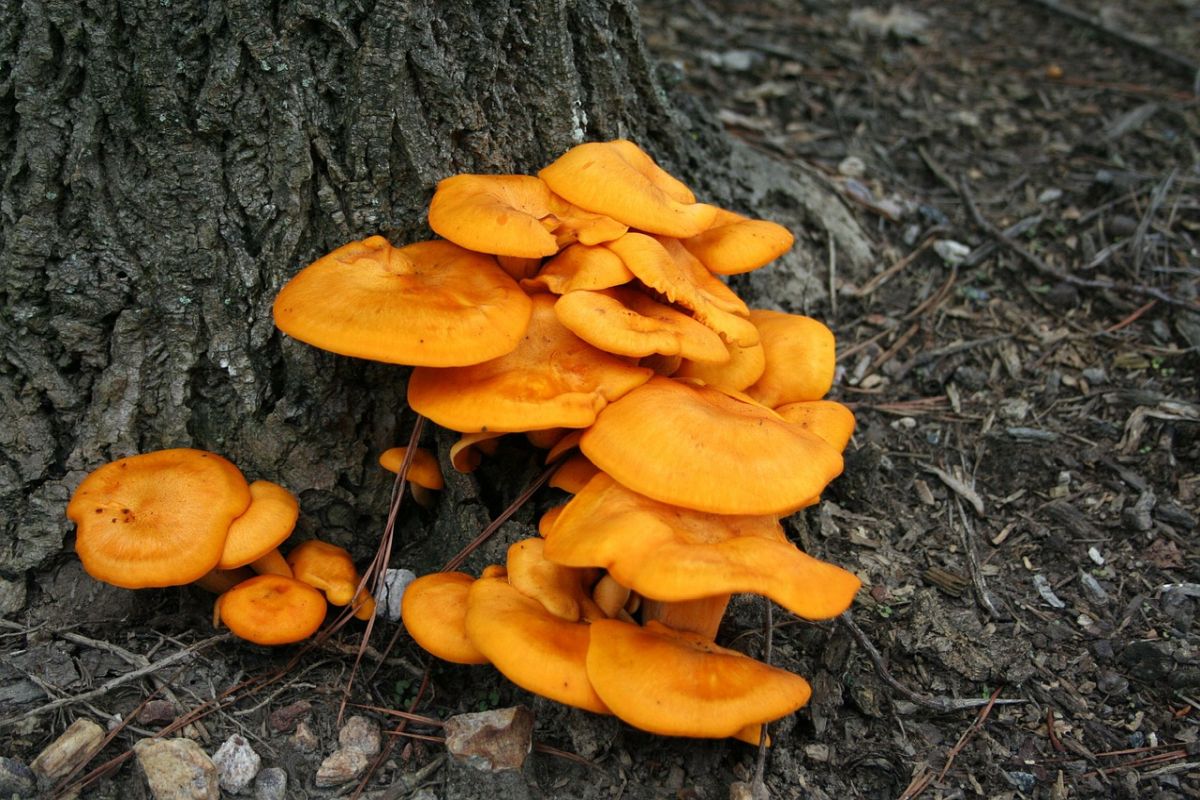
This is another of the false friends in the mushroom category. Jack-o-Lantern Mushrooms look like chanterelle mushrooms and are often mistakenly harvested as such. They grow wild at the base of trees and emit green bioluminescence from their gills when freshly picked.
They are often cooked, as chanterelle mushrooms are, but they remain toxic despite the temperatures required for their preparation. These mushrooms cause digestive issues in most people, whether eaten raw or cooked.
26. False Champignon Mushrooms

False champignon mushrooms are another poisonous mushroom that mimics edible mushrooms. Also known as the Fool’s Funnel, these mushrooms grow in rings in fields and meadows, known as Fairy Rings.
Their edible counterparts are Fairy Ring Champignon Mushrooms. False champignons are white mushrooms that cause sweating and salivation but rarely death.
27. Inky Cap Mushrooms

Inky Cap mushrooms are a curious variety. They are actually edible mushrooms but, when consumed with alcohol, can cause digestive distress, tingling limbs, and increased heart rate.
These symptoms can occur even if alcohol is not consumed until 3 days after eating the mushrooms. It works so well, in fact, that it is sometimes used as a treatment for alcoholism.
28. False Morels

While morel mushrooms are delicious and often used in high-end meals and cooking, the false morel has quite a different reputation.
There are arguments about the detriment this particular mushroom poses. But The Great Morel website recommends that mushroom hunters leave these mushrooms where they are.
Potentially carcinogenic, this mushroom has reportedly caused diarrhea, headaches, extreme dizziness, and even death. The easiest way to tell the difference between true and false morels is that the false type is not hollow inside.
Types of Mushrooms for Cooking
29. Button Mushrooms

Button mushrooms are delicious and easy to use in recipes. They are often sauteed and are particularly tasty with pasta. However, other types, like porcini mushrooms, are more common in Italian cuisine.
Prepping is as easy as trimming the stems and cleaning them. There is some debate over whether or not to wash your button mushrooms. Run them underwater and then blot them on a paper towel for best results.
30. Portobello Mushrooms
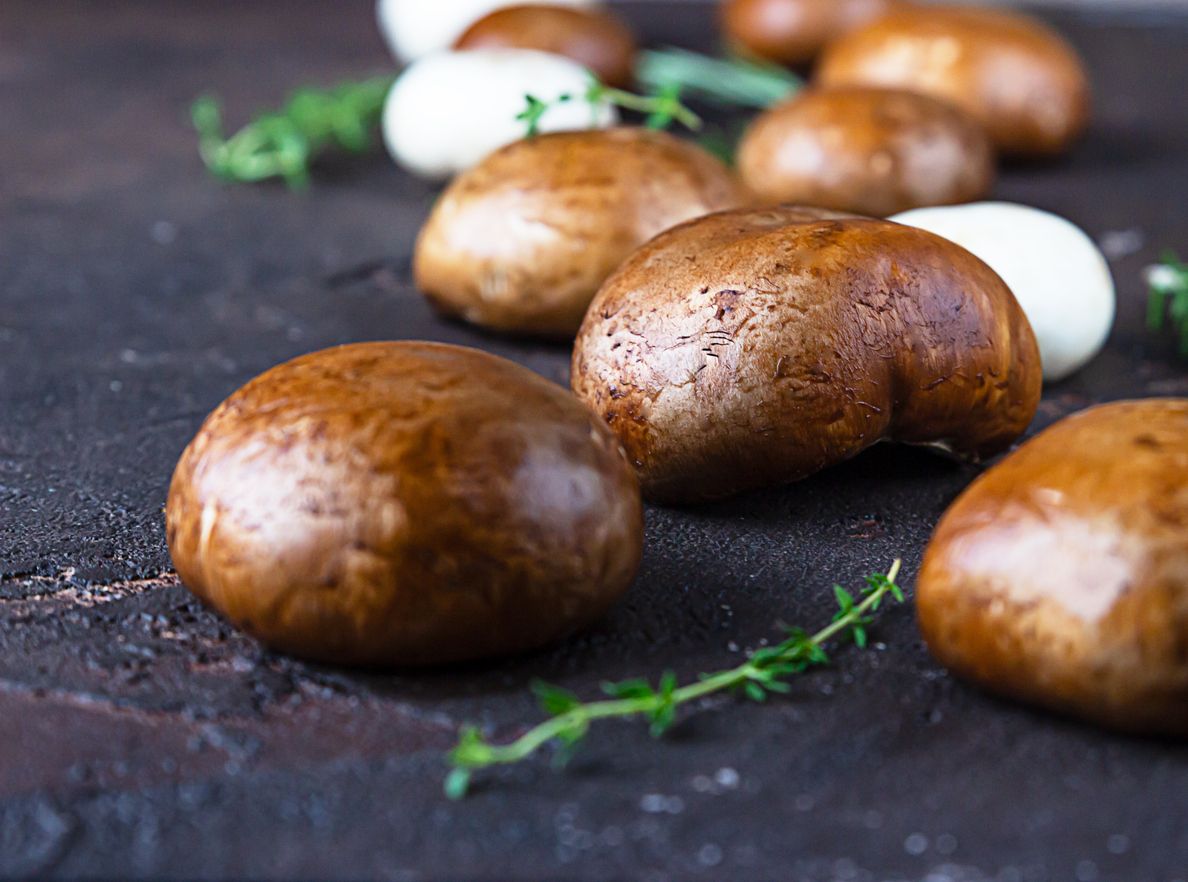
There is an abundance of ways to use the portobello mushroom in cooking. You can choose to grill them, cook them on a stovetop, or bake them in the oven.
If you’re grilling, they are big enough to put right on the grill the way you would a hamburger, either with or without a marinade. On the stove, try sauteeing them with some butter or olive oil.
In the oven, you should definitely marinate first. Then they can be baked in less than an hour. Because of their size and mild flavor, they are ideal for stuffing.
They work wonderfully as a replacement for bacon in a vegetarian version of a club sandwich or can be added to salads, soups, and pizzas.
Or you could grill them up next to your burgers and use them as buns.
31. Oyster Mushrooms and King Oyster Mushrooms

The King Oyster Mushroom, also known as Trumpet Mushrooms or the king brown mushroom, is often called “vegan scallops” or “mushroom steaks,” because of their dense, meaty texture, and their ability to function as a replacement for seafood and beef.
If you are using them in this manner, you should choose mushrooms with firm stems and unbroken caps. Brush the dirt off them gently rather than washing them, so they don’t break.
You don’t have to be quite as choosy if you are slicing them, which is good news since this variety can be expensive. When sliced, these mushrooms can be boiled, sauteed, or grilled.
The smaller-sized oyster mushroom can be rinsed under water and should be stored in a paper bag in the fridge, not in your produce drawer. They are common in both Asian and European cuisines and can be sauteed in olive oil with lemon and garlic for a Mediterranean-type flavor.
Just make sure you slice off the bottom stem before cooking, as it can be woody or rubbery in texture.
You can also bake, fry, or grill oyster mushrooms. They pair well with pasta, but their earthy flavor also makes them an excellent choice in dishes that call for oyster or fish sauce.
32. Shiitake Mushrooms
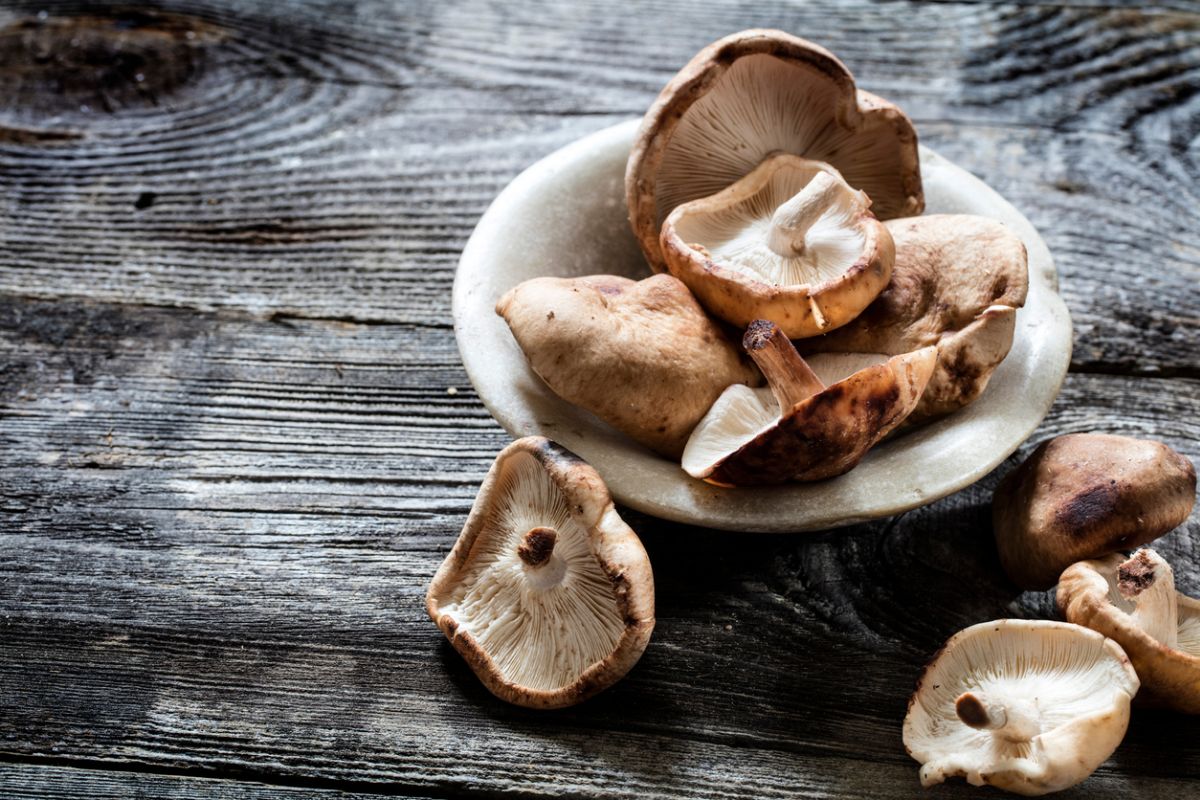
Shiitake mushrooms are very versatile. These delicious mushrooms have a smoky flavor that makes them an ideal addition to pasta and soups. They can be sauteed, or used in stir-fries, and are wonderful when stuffed into dumplings, used as an ingredient in clay pot chicken and rice, or sukiyaki.
33. Maitake Mushrooms

Maitake mushrooms are digestible as long as the mushrooms are not too old. As young mushrooms, they can be added to salads, noodle dishes, pizzas, omelets, or soups. They have a rich, earthy flavor and can be sauteed as a side dish, a topping for meat dishes, or a great meat substitute.
34. Enoki Mushrooms

Enoki mushrooms are most popular in Asian cooking. They grow in bunches, so you will need to cut the root off the bottom before using them. Sautee them over medium heat. Using sesame oil for this adds a lovely flavor to your mushrooms.
Add some garlic, and cook for 30 seconds. Then add soy sauce, and cook for another 30 seconds. Because these mushrooms are small and delicate, they only take about a minute to cook. This makes them an ideal addition to any weeknight meal.
35. Cremini Mushrooms

Cremini mushrooms fall in the middle of the flavor range. They, therefore, can be used in a wide variety of dishes and recipes. You can cook them with garlic, add them to your pizza, or stuff them with pesto. You can use them in risotto, wrap them in bacon, or roast them in a balsamic and soy sauce.
How to Cook Mushrooms
There are many ways to prepare mushrooms, and what you ultimately decide depends on what type of mushroom you are using. Keeping in mind that your cooking style and type of mushroom will affect the process, below are some simple steps for a no-muss, no-fuss sautee for some super-tasty mushrooms.
Instructions:
1. Heat butter, oil, or vegan butter over medium to medium-high heat
2. Once the butter has melted, or the oil heated, add your mushrooms. Stir once to incorporate the butter/oil and mushrooms, then leave them to cook without stirring
3. Once the mushrooms have reduced by half, they are beginning to brown at the edges, and all liquid has evaporated, add more butter, stir to combine, and allow to cook again
4. Add salt, pepper, and any other herbs of your choosing
FAQ
How many types of mushrooms are there?
There are over 10,000 different known types of mushrooms. And scientists predict that are even more that have yet to be identified. This number, however, includes both edible and poisonous and cultivated and wild mushrooms.
There are 39 varieties you are likely to encounter in grocery or specialty shops. Or perhaps even out on your next hike or foraging trip.
What is the most popular type of mushroom?
This is really a bit of a trick question. There isn’t one most popular type of mushroom. People’s tastes differ, but there are several varieties people tend to gravitate toward.
These include:
- Button Mushrooms
- Cremini Mushrooms
- Porcini Mushrooms
- Truffle Mushrooms
- Oyster Mushrooms
- Shiitake Mushrooms
- Portobello Mushrooms
What is the best-tasting mushroom?
This is another question whose answer is subjective. It really depends on your personal tastes. But if you’re looking for the most flavorful mushroom, Bon Appetit says those are Maitake mushrooms.
They recommend using them to bring out to flavor of other types of mushrooms and comment that they work well in everything from pasta to pizza to soups and sandwiches.
What is the rarest mushroom?
The Yartsa Gunbu is the rarest type of mushroom. It has never been cultivated and must be found in the wild. Even in that environment, they aren’t common.
The mushroom is parasitic and infects the body of a specific type of caterpillar. The caterpillars typically burrow in the ground just before they die, making this type of mushroom challenging to find for even the most season of mushroom hunters.
What is the healthiest mushroom?
There is some debate about this, but most sources agree the healthiest mushroom is the Reishi. These medicinal mushrooms have so many health benefits.
Reishi mushrooms are known to help lower cholesterol and high blood pressure. They also contain immunity-boosting compounds that are antiviral, antifungal, and cancer-fighting.
Some research even suggests it may help with Alzheimer’s, Huntington’s, and other neurodegenerative disorders.
In general, mushrooms are a healthy choice. They are low in calories, full of vitamins and nutrients, and can even help reduce inflammation.
What are the most expensive types of mushrooms?
At $2,000 an ounce, the Yartsa Gunbu is the most expensive type of mushroom. But it’s not a particularly popular one. When considering which popular mushrooms are the priciest, the European White Truffle boasts an impressive price tag of $3,600 per pound.
Matsutake mushrooms sell for $1,000-$2,000 per pound and are the most expensive of the genus Tricholoma. Morel mushrooms seem almost cheap by comparison, despite being $254 per pound.
Conclusion
Mushrooms come in various types, flavors, and sizes. Some types of mushrooms are great for cooking, while others are known for their medicinal or hallucinogenic capabilities. They are suited to nearly any type of cuisine, are low in calories, and are high in vitamins.
Considering just how versatile mushrooms are, there is certain to be something for everyone when it comes to this vegetable.
